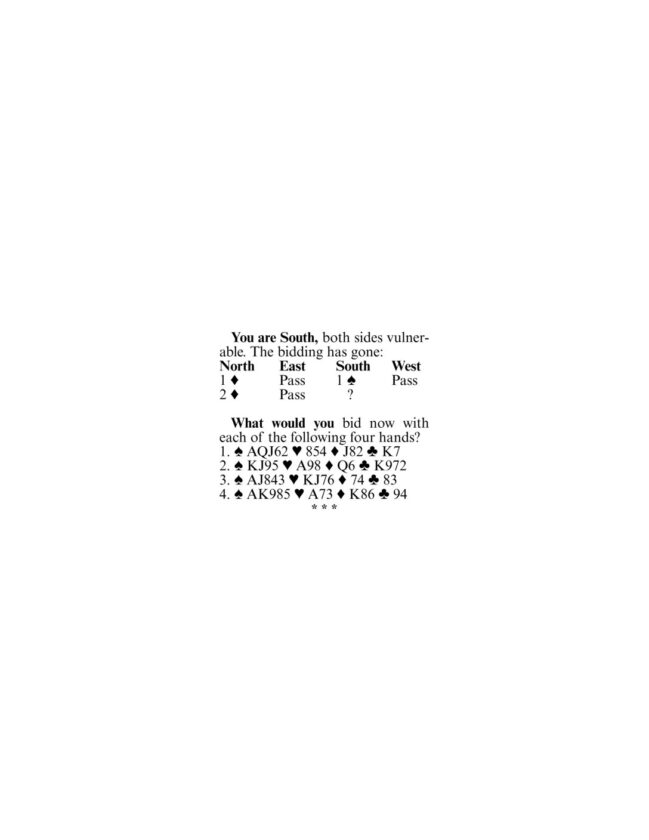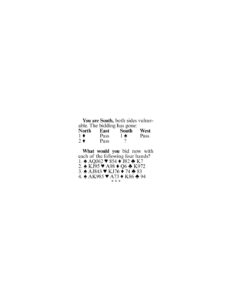Bridge by Steve Becker

1. Three diamonds. Partner’s rebid indicates a hand in the minimum range, but game possibilities cannot be dismissed when you have 11 high-card points and partner might have as many as 15. To indicate mild interest in game, you raise partner to three diamonds, saying that game in spades, diamonds or notrump is possible if partner is in the upper half of the range for his two previous bids.
It is far better to show your diamond support than it is to rebid your five-card spade suit. If partner has three-card support for spades and better than a minimum for his two-diamond bid, he will bid three spades over three diamonds.
2. Three notrump. It would be wrong to bid only two notrump, which would merely invite partner to bid game and allow him to pass with minimum values. Since you have a full opening bid, you must make sure of reaching game and everything points to notrump as the best spot.
3. Pass. Partner has between 13 and 15 points, so it is hardly likely that your nine-point hand combined with his can produce a game. Once you reach this conclusion, the only problem remaining is where the best partscore lies. There is no good reason to think that a two-heart or two-spade bid would help improve matters, especially when a bid of two hearts would force partner to bid again. Partner is very likely to have a six-card diamond suit and should be able to make two diamonds opposite your hand.
4. Two hearts. This unorthodox bid with a three-card suit is the best answer to a difficult situation. Obviously, there’s a game somewhere, but you have no way of knowing whether it’s in spades, diamonds or notrump.
Since you are naming a new suit as responder, partner is forced to bid again, even with a minimum opening bid. His next action — the most likely being another diamond bid, a spade preference or a notrump bid — should clear up the question of which game to bid. If partner should happen to raise hearts, you will show your diamond support next.
Tomorrow: The numbers game.


